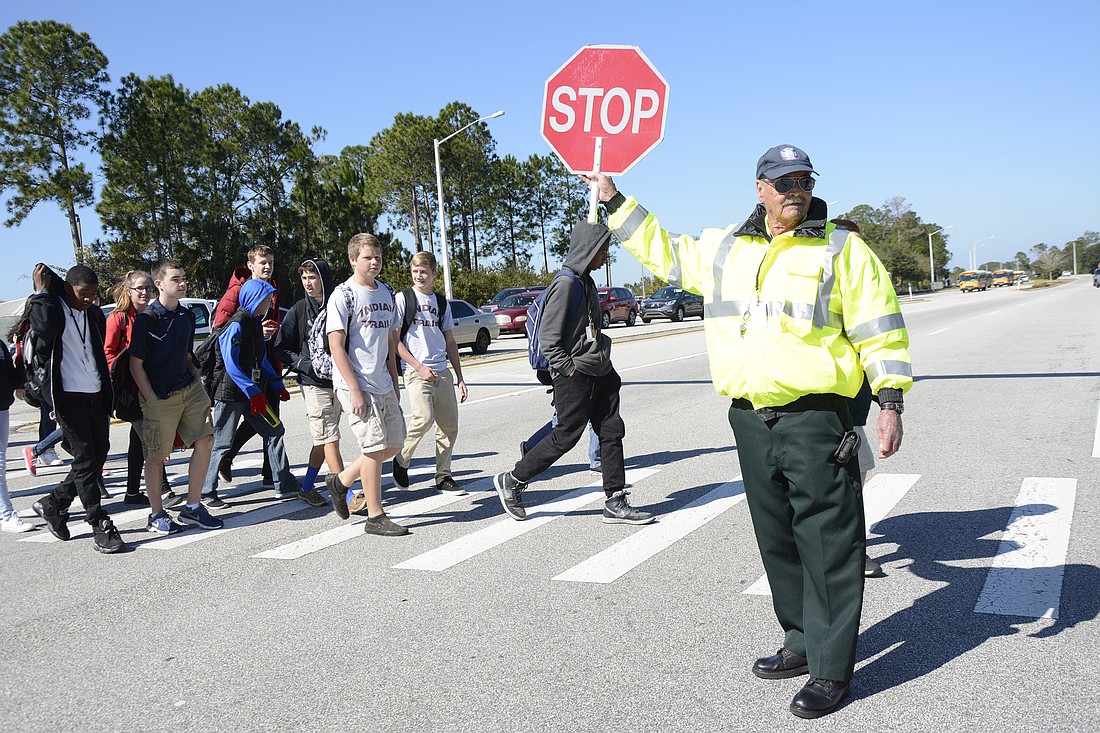- January 17, 2025
-
-
Loading

Loading

A group of local officials working to improve school bus stop safety have ranked the school district's more than 600 bus stops by safety factors, and picked the ones that seem most vulnerable.
This coming Wednesday, Feb. 17, the joint city of Palm Coast/Flagler Schools staff group will meet to discuss what can be done to make them safer.
"At the top level, we're looking at 18-20 of them that we're going to look at closely," Palm Coast Senior Planner Jose Papa said. "The critical ones are the ones where the bus drivers said there are problems," he said. For those, "there likely will be some treatment."
The draft list of stops, provided by city staff Feb. 9, is preliminary and might change. It hasn't gone through a staff review yet, and when that happens, some stops might be removed from the list, and others added.
But the stops on it are there because they got the highest combined numerical "score" on a rubric of four risk factors, including the number of students using each stop, the children's age, feedback from bus drivers, and the stops' physical locations.
Once the group finalizes that list of the 20-or-so most vulnerable stops and decides what to do to make them safer, it could continue moving down the overall list of district stops, evaluating ones that got lower risk scores to see if they also need changes, Papa said.
Things that could be done, said City Councilman Jason DeLorenzo, the City Council's representative on the safety group, include moving the stops to a nearby but less busy street, or to the other side of a street so fewer kids would have to cross the road, or building concrete pads on nearby city-owned land for children to wait on to keep them off the street.
The city's construction and engineering department is evaluating how much it would cost to build the pads, Papa said, and that would vary by location depending on factors like whether or not pipes would have to be added underneath the pads and how the pads would affect area swales.
Meanwhile, the River-to-See Transportation Planning Organization has also funded a safety corridor study along the length of Belle Terre Parkway, and the city of Palm Coast's traffic engineering department is reviewing its evaluation report, DeLorenzo said. That might also affect the bus stop safety initiative.
Any bus stop changes that would require money from the city of Palm Coast or the Flagler County School District would have to go before the City Council or the School Board for approval.
The joint group of local officials working on improving school bus stop safety began meeting less than week after 7-year-old Wadsworth student Kymora Christian was struck and killed by a car while waiting at her school bus stop Oct. 7, 2015.
Kymora's death led residents to create a petition and a Facebook page urging the city of Palm Coast to make its streets safer for children.
It was the third case of a child being struck by a car on their way to or from school this school year, and there have since been several more, including one which left a boy with injuries Jan. 4 after a car struck him as he rode his bicycle.